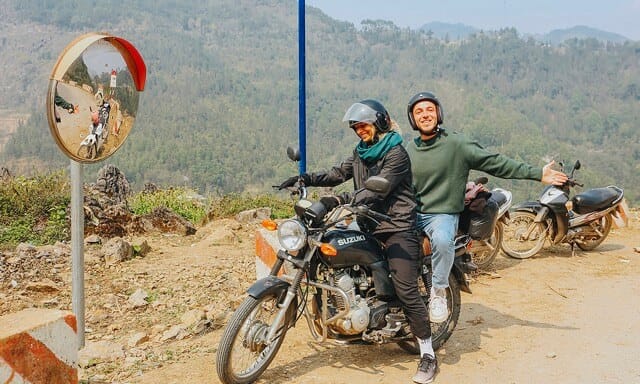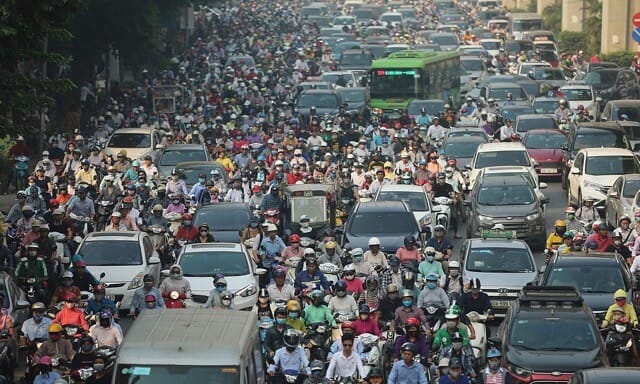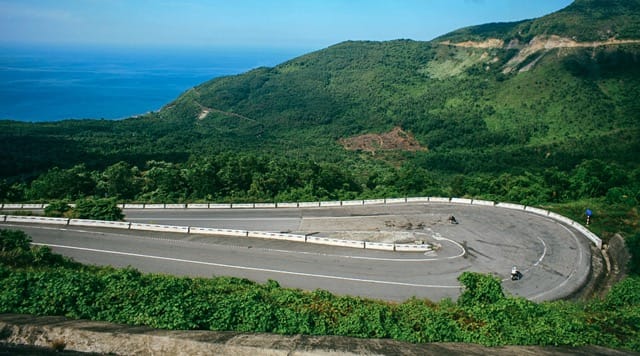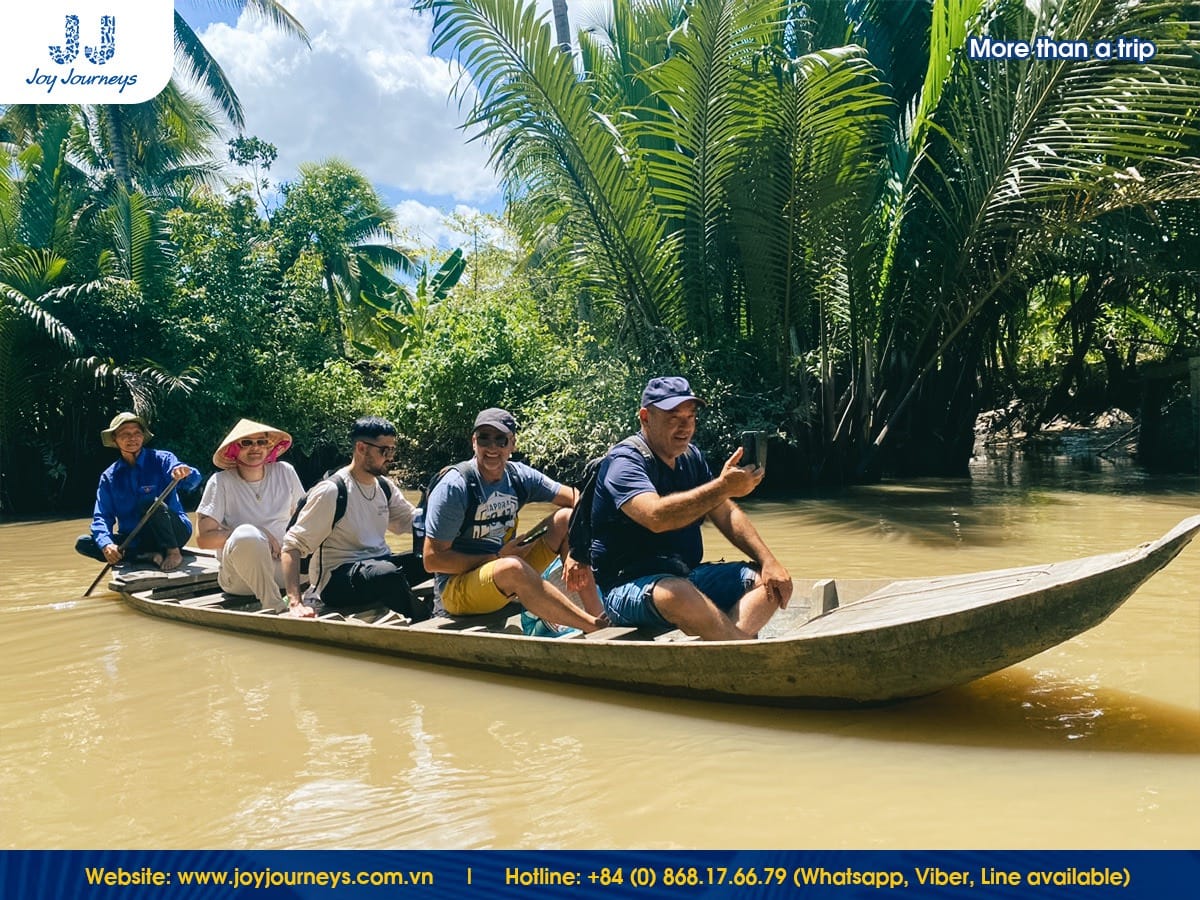Driving in Vietnam is one of the most rewarding experiences in this country. This will help you to understand local customs, road conditions, and traffic rules, which is vital for a safe and enjoyable journey.
You can also discover additional transportation options in this article.
Contents
Can Tourists Drive in Vietnam?
When planning a trip to Vietnam, one might wonder whether tourists are allowed to get behind the wheel. Let’s clarify this important aspect of traveling in Vietnam.
Tourist Driving: Permissible or Restricted?
The good news is that yes, tourists can drive in Vietnam, but there are crucial details to consider.
Legal Requirements and Restrictions
To legally drive in Vietnam as a tourist, you must:
1. Have a Valid International Driving Permit (IDP): An IDP is often mandatory for tourists to operate a motor vehicle in Vietnam. It serves as a translation of your home country’s driving license and is recognized by Vietnamese authorities.
2. Comply with Local Traffic Laws: Familiarize yourself with Vietnam’s traffic laws and regulations, which may differ from your home country. Adhering to local rules is essential for a smooth driving experience.
3. Check Rental Requirements: If you plan to rent a vehicle, ensure you meet the rental company’s specific requirements. This may include age restrictions and additional documentation.
4. Insurance Coverage: Verify that your insurance covers driving in Vietnam. If not, consider purchasing adequate coverage during your stay.
Remember, safety should be a top priority when driving in Vietnam. With the right documentation and adherence to local laws, you can explore this beautiful country with confidence.

Rules and Regulations for Driving in Vietnam
When it comes to driving in Vietnam, understanding the rules and regulations is essential for a safe and enjoyable journey. In this section, we will delve into two crucial aspects: road conditions and traffic rules, as well as the driving orientation in Vietnam.
Road Conditions and Traffic Rules
Road Conditions in Vietnam
Vietnam boasts diverse landscapes, from bustling city streets to scenic rural routes. While major highways are generally well-maintained, some rural roads may be narrow and less developed. Expect variations in road quality, so it’s advisable to drive cautiously, especially in less urbanized areas.
Traffic Rules and Local Customs
Vietnam’s traffic rules may differ from what you’re accustomed to in your home country. Here are some common rules and customs to keep in mind:
- Horn Usage: Honking is frequent and serves as a form of communication. Don’t be surprised by the constant horn sounds.
- Overtaking: Overtaking is common, even on blind curves. Exercise caution and use your horn when passing.
- Traffic Signals: Traffic lights and signals are respected, but some local drivers may not adhere strictly.
- Pedestrians and Cyclists: Be aware of pedestrians and cyclists on the road, especially in urban areas.
- Priority: Vehicles often yield larger or faster ones. Defensive driving is key.
Grab is a convenient option for your Vietnam journey.
Driving Orientation
In Vietnam, vehicles drive on the right-hand side of the road, consistent with many countries worldwide. However, cars will be driven on the left side of the lane. It’s essential to pay attention to road signage and follow the flow of traffic.
Insights for Navigating Vietnamese Roads
Vietnamese roads can be bustling and lively, particularly in urban areas. Defensive driving and patience are essential. Keep an eye out for motorbikes and scooters, which are ubiquitous in Vietnam. Be mindful of local driving habits and adapt to the traffic flow while following the rules.
Understanding road conditions, traffic rules, and driving orientation will contribute to a safer and more enjoyable driving experience in Vietnam. With a cautious approach and respect for local customs, you can confidently explore this beautiful country by road.

Tips for Safety and Cultural Experience
Driving in Vietnam is an adventure that promises both excitement and challenges. To ensure a safe and culturally enriching experience, it’s essential to be well-prepared. In this section, we’ll explore two critical aspects: staying safe on Vietnamese roads and embracing the unique driving culture.
Staying Safe on Vietnamese Roads
1. Wear Helmets: If you’re riding a motorbike or scooter, wearing a helmet is not just a recommendation but a legal requirement. Ensure your helmet is in good condition and properly fastened.
2. Defensive Driving: Be cautious and anticipate the unexpected. Expect motorbikes, bicycles, and pedestrians to share the road with you, often in unpredictable ways.
3. Avoid Night Driving: Nighttime driving in Vietnam can be more challenging due to reduced visibility, inadequate road lighting, and increased risks. Whenever possible, opt for daytime travel.
4. Respect Traffic Signals: Follow traffic signals and signs diligently. Running red lights or disregarding stop signs can result in accidents or legal troubles.
5. Stay Calm in Traffic: Vietnamese traffic can be chaotic, especially in cities. Maintain a calm and patient attitude to navigate congested roads.
6. Common Road Hazards and How to Avoid Them
- Potholes: Vietnam’s roads can have potholes, especially in rural areas. Drive at a moderate speed and be prepared to swerve around potholes if necessary.
- Animals on the Road: It’s not uncommon to encounter animals like cows, chickens, or dogs on the road, particularly in rural regions. Slow down when approaching them.
- Weather Conditions: Vietnam experiences diverse weather conditions. Rain can make roads slippery, so drive cautiously during wet weather. In mountainous areas, fog can reduce visibility; use fog lights when necessary.
Embracing the Cultural Experience
Unique Driving Culture in Vietnam
Vietnam has a distinct driving culture that may surprise and intrigue you:
- Motorbike Dominance: Motorbikes and scooters are the primary modes of transportation in Vietnam. They weave through traffic with ease, often carrying entire families or stacks of goods.
- Street Food Stops: One of the joys of driving in Vietnam is the abundance of street food stalls. Embrace the culture by stopping for delicious local snacks along your journey.
Immersing in the Local Experience
To truly immerse yourself in the local driving culture:
- Interact with Locals: Strike up conversations with locals at rest stops or when asking for directions. They can offer valuable insights and recommendations.
- Try Local Cuisine: Sample regional dishes at roadside eateries. Explore the flavors of Vietnamese cuisine beyond the tourist hotspots.
- Learn Basic Phrases: A few basic Vietnamese phrases can go a long way in building rapport with locals and navigating your way around.
Driving in Vietnam can be a thrilling experience, and by staying safe on the roads and embracing the local culture, you’ll create lasting memories of your journey through this beautiful country. So, fasten your seatbelt, wear your helmet, and get ready for a road trip like no other.
To be able to feel the landscape better, experiencing a motorbike in Vietnam is an activity worth considering.
Driving in Vietnam Legally
Driving through the picturesque landscapes of Vietnam is a captivating experience, but to ensure a smooth and lawful journey, it’s essential to understand the legal aspects of driving in this beautiful country. In this guide, we will explore how to drive in Vietnam legally, covering topics such as licenses, permits, signposts, and helmets.

Don’t Drive Without a License
Implications and Risks
Driving without a valid license in Vietnam can lead to significant risks and consequences. It’s crucial to be aware of these implications:
- Legal Consequences: Operating a vehicle without the proper license can result in fines, vehicle impoundment, or even legal actions against you.
- Invalidated Insurance: Your insurance may become invalid when driving without a valid license, leaving you financially vulnerable in case of accidents.
- Safety Concerns: Driving without proper training and documentation can jeopardize your safety and the safety of others on the road.
Importance of Obtaining Permits
To drive legally in Vietnam, it’s essential to obtain the necessary permits:
- International Driving Permit (IDP): If you’re a tourist, obtaining an International Driving Permit (IDP) is often mandatory for driving in Vietnam. It serves as a translation of your home country’s driving license and is widely recognized by Vietnamese authorities.
- Local Requirements: Familiarize yourself with any local requirements or restrictions related to driving permits, which may vary by region.
Vietnam Motorbike License
Specific Requirements and Procedures
If you plan to ride a motorbike in Vietnam, understanding the specific requirements for obtaining a motorbike license is crucial:
- Regional Variations: Licensing requirements can vary by region in Vietnam, so it’s important to research the specific procedures for the area you plan to visit.
- Testing Procedures: Be prepared to undergo written and practical tests to obtain a motorbike license in Vietnam. These tests are designed to ensure you have the necessary skills and knowledge to operate a motorbike safely.
Unique Considerations for Tourists
Tourists should be aware of any unique considerations or regulations related to motorbike licenses in Vietnam:
- Temporary Licenses: Some regions may offer temporary licenses for tourists, allowing them to legally ride motorbikes during their visit.
- Rental Requirements: If you plan to rent a motorbike, ensure you meet the rental company’s specific requirements, which may include age restrictions and additional documentation.
International Driving Permit in Vietnam
Validity and Use
An International Driving Permit (IDP) can be a valuable document for tourists driving in Vietnam:
- Recognized Document: The IDP is widely recognized in Vietnam and serves as a translation of your home country’s driving license, making it easier for local authorities to understand your qualifications.
- Additional Documentation: It’s essential to carry both your home country’s driving license and the IDP when driving in Vietnam. Having both documents will help ensure you comply with local regulations.
Requirements and Restrictions
When using an IDP in Vietnam, be aware of any specific requirements or restrictions:
- Vehicle Type: Depending on the class of your IDP, you may be limited to certain vehicle types. Ensure your IDP covers the type of vehicle you plan to drive.
- Valid Period: The validity period of an IDP can vary, so make sure yours is valid for the duration of your stay in Vietnam.
Signposts and Helmets
While driving in Vietnam, pay close attention to road signposts, as they may differ from those in your home country. Understanding these signs is essential for safe navigation.
Additionally, when riding a motorbike or scooter in Vietnam, always wear a helmet. Not only is it a legal requirement, but it’s also a crucial safety measure. Ensure your helmet is in good condition and properly fastened.
Driving in Vietnam can be a delightful and memorable experience, provided you do so legally and responsibly. By obtaining the necessary permits, adhering to local regulations, and practicing safe driving habits, you can explore the beauty of Vietnam from behind the wheel while enjoying a worry-free journey.
Exploring Vietnam’s Scenic Routes
Embarking on a road trip through Vietnam promises a journey filled with breathtaking landscapes, vibrant culture, and memorable experiences. In this guide, we’ll provide you with valuable insights into itinerary planning and suggest some of the most scenic routes and must-visit destinations accessible by road.
Suggesting Scenic Routes
1. Ha Giang Loop
Start your adventure in the far north with the Ha Giang Loop. This winding mountainous route takes you through terraced rice fields, lush valleys, and remote villages inhabited by ethnic minorities. The dramatic landscapes and the warmth of the locals make this journey truly unforgettable.
2. Hai Van Pass
For coastal beauty and history, drive the Hai Van Pass, made famous by the BBC’s “Top Gear.” The pass offers panoramic views of the South China Sea, lush green hills, and ancient ruins. It’s a picturesque drive that connects Hue and Da Nang.
3. Ho Chi Minh Road
Stretching from the north to the south, the Ho Chi Minh Road traverses through remote regions and national parks. It’s a less-traveled route that promises solitude, natural beauty, and encounters with local hill tribes.
If you love sports, try cycling in Vietnam.
Road Trip Itineraries
1. Northern Vietnam Exploration
Begin your adventure in Hanoi and make your way to Sapa for stunning mountain vistas. Continue to Ha Giang for the Loop, then head to Ninh Binh for a contrast of limestone karsts and emerald rice paddies. Conclude your journey in the ancient town of Hoi An.
2. Central Coast Discovery
Start in Da Nang and explore the Hai Van Pass before reaching the historic town of Hoi An. Continue south to Nha Trang for pristine beaches, and then make your way to Dalat for cool mountain air. Conclude your trip in bustling Ho Chi Minh City.
3. Mekong Delta Expedition
For a different experience, explore the Mekong Delta. Start in Ho Chi Minh City and head to Can Tho, known for its floating markets. Cruise through lush waterways, visit traditional villages and savor local cuisine.

Must-Visit Destinations
1. Halong Bay
A UNESCO World Heritage Site, Halong Bay is renowned for its emerald waters and thousands of limestone karsts. Take a boat tour to explore hidden caves and enjoy the stunning scenery.
2. Phong Nha-Ke Bang National Park
This park is home to some of the world’s largest caves, including Son Doong. Explore these natural wonders and trek through lush jungles to discover pristine landscapes.
3. Sapa Valley
Sapa offers spectacular mountainous terrain and the chance to interact with local ethnic communities. Hike through terraced rice fields and immerse yourself in their rich culture.
4. Hue’s Imperial City
Explore the historical and cultural richness of Hue’s Imperial City, with its ancient citadel, royal tombs, and beautiful pagodas.
Planning a road trip through Vietnam allows you to experience the country’s diverse landscapes and cultures. Whether you choose to follow one of our suggested itineraries or create your own, Vietnam’s scenic beauty and enchanting destinations await you at every turn.
Conclusion
In summary, driving in Vietnam offers travelers an unforgettable adventure. To ensure a safe and enjoyable journey, obtain the necessary permits, embrace local customs, and prioritize safety. Whether you explore scenic routes or historic sites, being well-prepared is the key to an enriching road trip in Vietnam. Safe travels!
Frequently Asked Questions
Q1: How can tourists obtain a driving license in Vietnam?
A1: Follow these steps:
- Check the age requirements (18 and above for both motorbike and car licenses) in Vietnam.
- Prepare necessary documents (passport, visa, home country license).
- Take a written test on road rules and regulations.
- Pass a practical driving test.
- Some regions may require a medical checkup.
- Pay the licensing fee.
- Receive your Vietnamese driving license.
Q2: Are there any recent updates or changes in the process?
A2: Check with local authorities or the nearest Vietnamese embassy or consulate for the latest information on licensing requirements and procedures.
Q3: Can I use my international driving license in Vietnam?
A3: Yes, an International Driving Permit (IDP) is generally recognized in Vietnam. Carry both your home country license and IDP issued by a competent authority.
Q4: Any specific requirements or restrictions when using an IDP in Vietnam?
A4: Keep in mind:
- The IDP is valid for three years from the date of issue.
- Ensure the class of your IDP matches the vehicle type you intend to drive.
- Comply with Vietnamese traffic laws and regulations during your stay.


Related Posts
Saigon’s “Flower Market Replica”: Where To Find Them
Ho Chi Minh City’s floral charm is not limited to its bustling wholesale markets. Imagine wandering through a place where vibrant petals, fragrant blooms, and the spirit of traditional Vietnamese markets come alive—without the overwhelming crowds. A flower market replica captures that magic, blending the beauty of fresh flowers with the charm of a curated, […]
Is it Safe to Travel to Vietnam Right Now? A Complete 2025 Guide
Vietnam has emerged as one of Southeast Asia’s most captivating destinations, drawing millions of visitors annually with its rich culture, stunning landscapes, and incredible cuisine. However, many travelers still ask: Is it safe to travel to Vietnam right now? This comprehensive guide provides you with everything you need to know about Vietnam travel safety in […]
Ho Chi Minh Cu Chi Tunnels Tour: The Ultimate Guide
The Cu Chi Tunnels stand as one of Vietnam’s most remarkable historical sites, offering visitors a profound glimpse into the ingenuity and resilience displayed during the Vietnam War. For travelers, a Ho Chi Minh Cu Chi tunnels tour represents an essential experience that combines education, adventure, and deep cultural understanding. This comprehensive guide will help […]